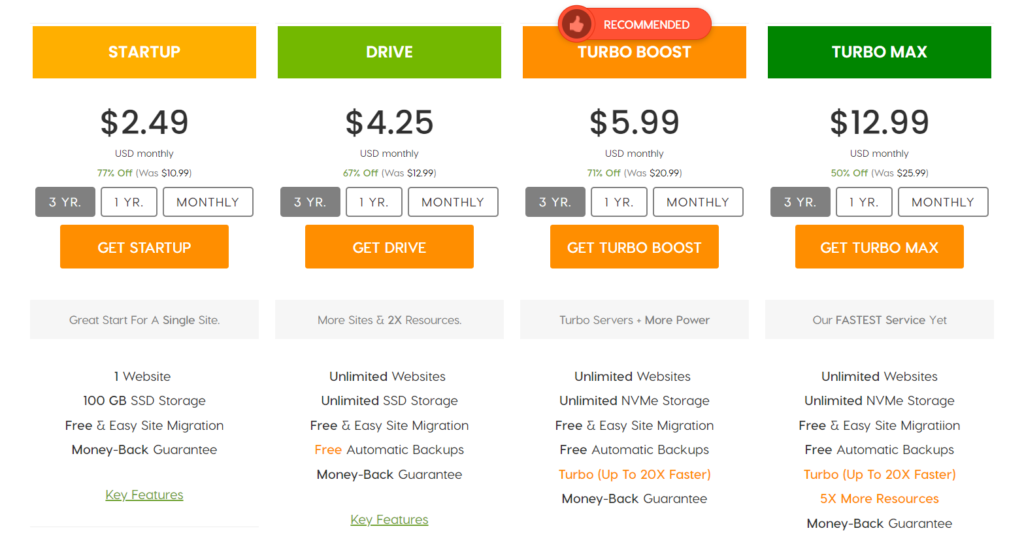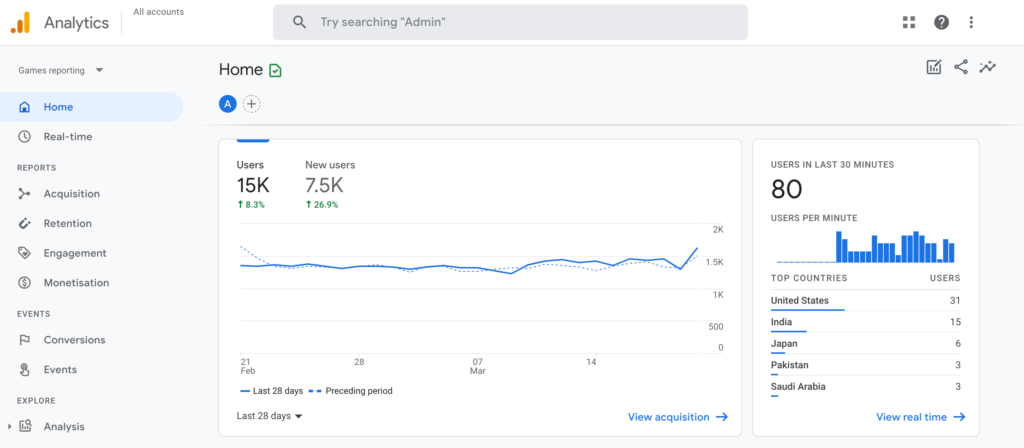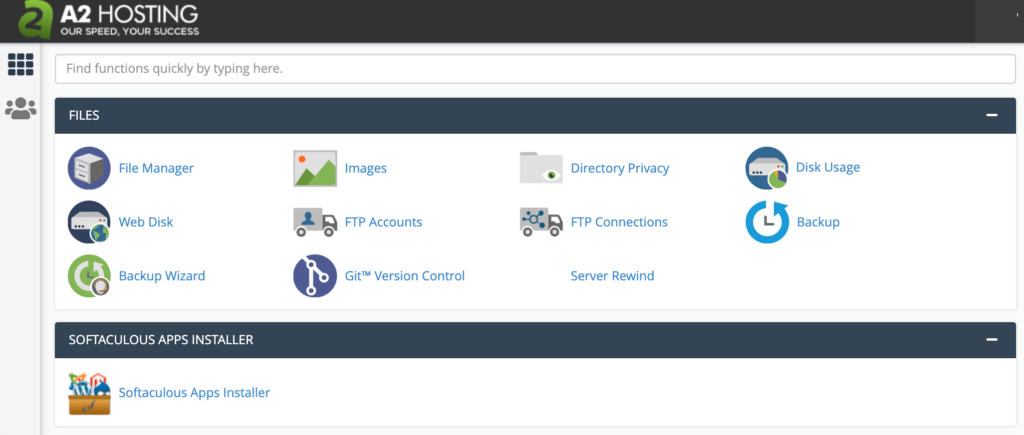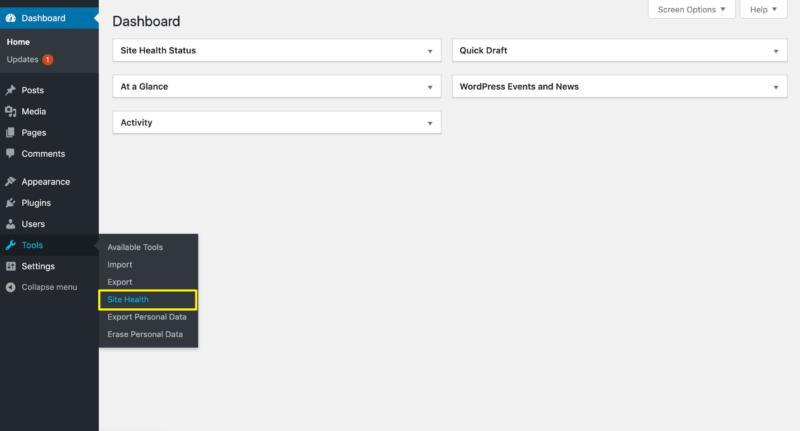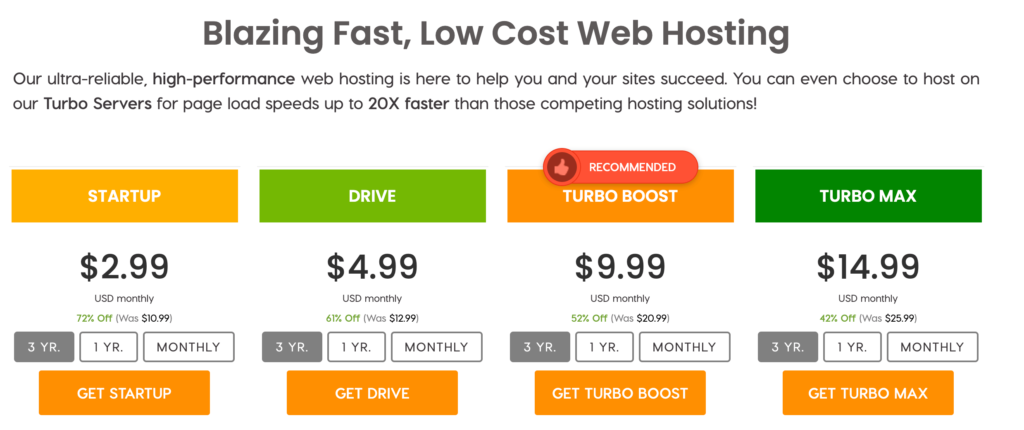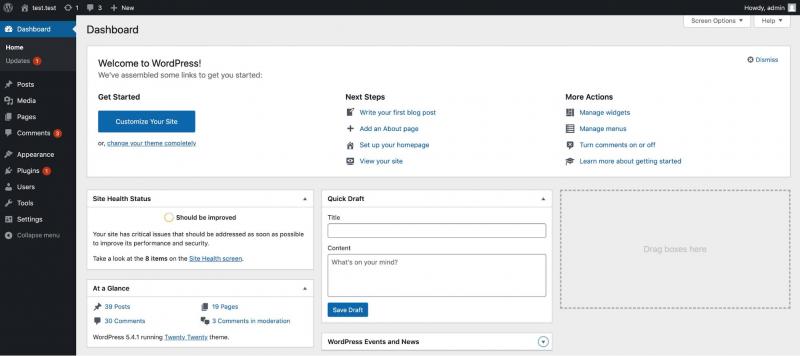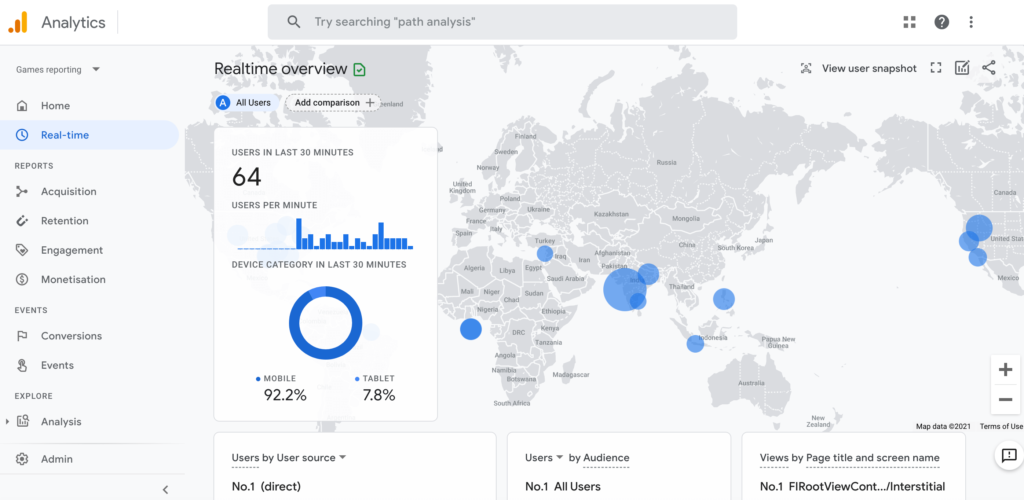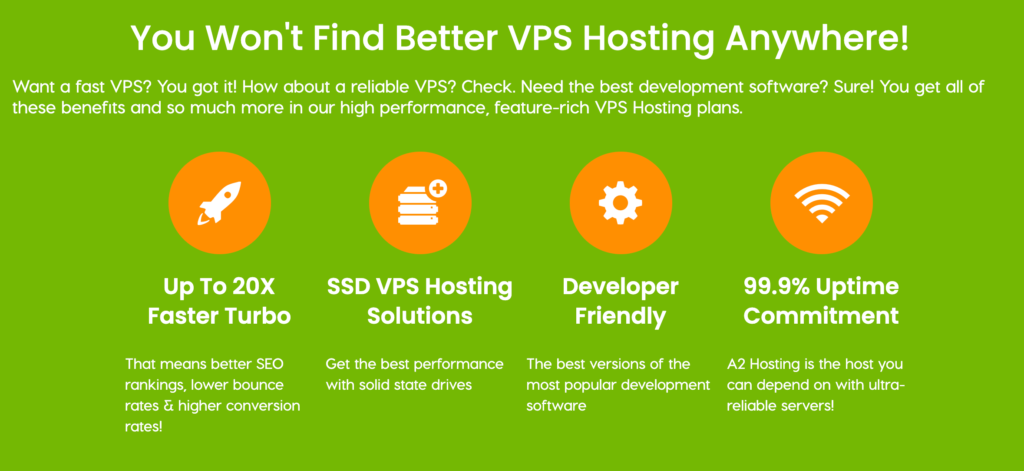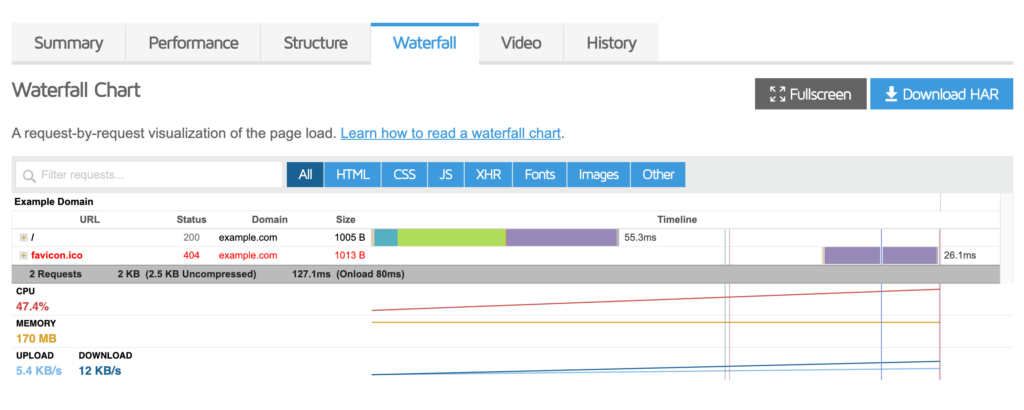How to Choose the Right Hosting Plan for Your Blog
Choosing a hosting plan and provider is one of the most important decisions you can make for your blog. Get this step right, and you’ll be off to a strong start. In contrast, choose the wrong provider and your blog will likely struggle to attract an audience, even if you’re writing compelling content.
By following some simple steps, you can find the plan and provider that will set you on the road to blogging super-stardom. With the right plan, you can be confident that your blog is delivering the performance, reliability, and security that readers expect. This leaves you free to concentrate on what really matters – writing quality posts.
In this article, we’ll discuss why choosing the right plan for your blog is crucial. We’ll then discuss the different hosting options that are available. Let’s get started!
An Introduction to Blog Hosting Plans
All web hosting starts with a server. This is a physical computer that remains online continuously, ideally without any interruptions. Every website or blog that exists online is hosted on a server – and yours is no exception!
Web hosting is an online service that enables you to publish your blog on the internet. When you purchase a hosting subscription, you’re renting space on a server. That server is owned by your hosting provider, and it’s responsible for supplying the hardware, software, connectivity, and associated services required to make your blog live. Your web host is also responsible for keeping that server online, and protecting it against malicious activity such as Distributed Denial of Service (DDoS) attacks.
Web hosting is the key to making your blog available for other people to view online. As part of your plan, your chosen provider will allocate space on its server for your blog’s CSS, HTML, images, and all its other resources. It will also store all the data necessary for your website to display and function correctly. Whenever someone enters your domain name into their address bar, your host will transfer all these files and data from its server to the visitor’s browser.
If you’re going to launch a blog, therefore, you’ll need a web hosting plan. There are hundreds of hosting providers to choose from, and most offer a range of plans:
This can vary from free options with limited resources and strict restrictions, to pricier options that give you complete control over your server’s hardware and software. To set your blog up for success, it’s important to choose your hosting plan carefully.
Why the Right Hosting Plan Is Crucial to Your Blog’s Success
Your hosting plan is the foundation of your blog. It’s vital that your plan has all the resources you need to provide a strong visitor experience. While there are steps you can take to boost your blog’s overall performance, ultimately you’re constrained by your hosting plan.
When you’re creating a blog, it’s easy to assume that performance isn’t a huge issue when compared to business-critical sites such as e-commerce stores. However, today’s internet user has a short attention span, and high standards.
It’s estimated that 40 percent of people abandon a site that takes longer than three seconds to load. If your blog is slow to load as a result of your hosting plan, your reader retention rates may suffer. You’ll also likely struggle to grow your audience.
Google has also confirmed that it uses page speed as a ranking factor. If your blog is performing poorly, you may struggle to climb in the search results:
Over 28 percent of Google users click on the first organic result. Therefore, you’ll want to do everything in your power to optimize your blog for search engines. However, you’ll face an uphill battle if your hosting plan is working against you.
When combined with a solid Search Engine Optimization (SEO) strategy, your blog can quickly start to attract a larger audience. This means more requests for your server to process:
If your plan doesn’t provide the firepower you need, then your blog may start to lag. In the worst case scenario, your server will become completely overwhelmed by this heavy traffic and your blog will experience downtime. This can damage your reputation and alienate your readers.
Over time, there’s also a chance that your blog’s requirements may change. If you’re consistently publishing high-quality content then you’ll require more storage space, for example, which your plan will need to provide. In other words, your web hosting has to keep up with your blog’s growth over time.
What to Look for in a Blog Hosting Plan
Most hosting providers offer a range of plans. When choosing one, it’s important to consider how much disk space you’ll require.
If you’re searching for a new plan for an existing blog, there are several ways to see how much disk space you’re currently using. Assuming that you have access to cPanel, you can view this information by navigating to Files > Disk Usage:
If you’re a WordPress user, version 5.2 introduced a Site Health tool. This enables you to view the size of your WordPress directories and database:
However, it can be difficult to judge how much disk space you’ll need for a new blog. It may help to consider the kind of content you’ll be publishing. For example, if you plan to host large video files or high-resolution images, then you’ll typically require more disk space.
You should also consider the plan’s bandwidth. This is the amount of data your blog can transfer within a specific amount of time. This will determine how quickly you can deliver content to your visitors. A good amount of bandwidth is vital for retaining loyal readers and growing your audience.
However, the ‘right’ amount of bandwidth can be difficult to calculate, and will vary depending on the number and size of your pages and your volume of traffic. The kind of content you publish on your blog will also have an impact on your requirements. For example, a blog with lots of heavy files will typically require more bandwidth when compared to a blog that features mostly text and images.
As a general rule, a new blog will attract less traffic, and will therefore have more modest bandwidth requirements. However, it’s also important to future-proof your blog by ensuring that your plan can accommodate a growing audience, plus the occasional spike in traffic.
The Most Common Types of Blog Hosting Plans (3 Choices)
Whether you’re launching an entirely new blog or migrating an existing one, your choice of hosting plan is crucial. The right plan can deliver the levels of performance you need to attract an audience in the short-term, and retain them in the long term.
To help you make the right decision, let’s look at the different hosting options that are available. We’ll then explore what they have to offer your blog.
1. Shared Hosting
Shared hosting is when you share a server with other websites. You’ll also share that server’s resources, including CPU, RAM, and hard drive space:
It’s common for blogs to start with a restricted budget. Your new blog may even be a hobby, or a side project that you hope to monetize at some point in the future. With shared hosting, the provider can place multiple sites on the same server, which helps reduce its operating costs. This often makes shared hosting a more affordable option when compared to other solutions, which is great news for bloggers.
Shared hosting is also ideal if you don’t need to install any specialist software, or require any complex or unique server configurations. Most blogs have fairly minimal needs, and many use a popular Content Management System (CMS) such as WordPress. This makes shared hosting a popular choice among bloggers:
However, since you’re sharing resources, your blog may struggle to withstand huge spikes in traffic. There’s also a chance that you may wind up sharing a server with bad neighbors, who consume an unfair portion of resources. This can impact your blog’s performance, and in extreme cases may even result in downtime.
If you’re hunting for a new hosting plan for an existing blog, it may help to evaluate the amount of traffic you’re currently receiving using a tool such as Google Analytics. If your blog is attracting high levels of traffic or experiencing dramatic spikes, then shared hosting may not be the ideal plan for you:
However, if you’re launching a new blog, chances are you’ll initially be attracting lower amounts of traffic. In this scenario, shared hosting can be a way to minimize your hosting costs while still providing enough resources to support your blog.
2. Virtual Private Server (VPS) Hosting
A Virtual Private Server (VPS) uses virtualization technology to split a single physical server into multiple virtual servers. The hosting provider can then partition each account on the server at the operating system level. Although you’ll continue to share the same physical server with other websites, a VPS simulates the experience of having your own dedicated server:
By opting for a VPS plan, your blog will have guaranteed access to a set of resources. This includes CPU, RAM, and bandwidth.
Since your provider can host multiple sites on the same server, VPS plans tend to be more affordable when compared to some alternative options, particularly dedicated hosting. This pricing makes VPS a good choice if you require exclusive access to a set of resources, but don’t necessarily have the budget to invest in a dedicated server. For example, your blog might attract large volumes of traffic, or you plan to host resource-intensive content such as high-resolution photographs.
It may also make sense to opt for VPS hosting if you plan to aggressively grow your blog. For example, you may have developed a packed content marketing plan, or partnered with an agency that promises to help you climb Google’s search results fast.
If you expect your blog’s requirements to increase sharply, it may make sense to invest in VPS hosting now, even if you’re launching a brand-new blog. This ensures that you’ll have guaranteed access to a set amount of CPU, RAM, and bandwidth, and will be in a stronger position to withstand spikes in traffic. This makes VPS hosting a popular choice among freelancers, startups, small businesses, and anyone else who’s creating a blog with the intention of attracting a large audience and/or generating revenue.
3. Dedicated Hosting
Dedicated hosting is when your site lives on a server that’s reserved for your use only. This ensures that you have access to 100 percent of that server’s resources. Since you’re the only customer on the server, dedicated plans are typically more expensive than VPS or shared options.
This kind of plan typically only makes sense for blogs that attract huge amounts of traffic, or make a significant amount of revenue. Most of the time, you’ll upgrade to dedicated hosting from a VPS plan, since dedicated hosting is rarely required for a brand-new blog.
If you’re considering upgrading to dedicated hosting, then it’s wise to monitor your blog’s performance. As you publish more content, you may see a drop in your blog’s page loading times. This can indicate that your current hosting plan isn’t providing enough RAM to support your site’s growing requirements.
At this point, switching to a dedicated plan may help you scale your blog without sacrificing its performance. It’s also a good idea to monitor your traffic. If your visitor numbers are consistently growing, then switching to dedicated hosting may help you avoid future problems:
If your blog’s performance is free-falling and your traffic is on the rise, this is a strong indication that it’s time to upgrade your plan. When you’re experiencing these issues on a shared plan, we’d typically recommend upgrading to a VPS first, rather than jumping straight to dedicated hosting.
If your new blog has complex or unusual technical needs, however, then you may need to invest in dedicated hosting immediately. Since you’re the only website on the server, you’ll have near-total control over its configuration. This may even include modifying your server’s core software and hardware.
How to Choose the Right Hosting Plan and Provider for Your Blog
Choosing a hosting plan is one of the most important decisions you can make for your blog. If you get this decision right, you’ll have everything you need to provide a strong visitor experience.
While each type of hosting plan has its benefits, many bloggers opt for shared hosting. The majority of blogs have manageable requirements, and are built using standardized CMS’ such as WordPress.
In addition, few blogs have complex technical requirements. When it comes to blogging, shared hosting can be a good way to avoid paying for resources and functionality that you don’t actually need.
When choosing your plan, it’s also important to consider your hosting provider. We always recommend checking any potential candidate’s uptime rates. This is the length of time the provider’s servers have been up and running. If your blog experiences frequent downtime, even your most loyal readers may lose patience and look elsewhere.
Wherever possible, it’s smart to look for a provider that offers an uptime guarantee. This indicates that the company is confident in its ability to keep your blog online.
As we’ve previously discussed, performance is a crucial factor in achieving blogging success. While your choice of hosting plan is vital, it’s also wise to look at the bigger picture, and consider the provider behind the plan.
At A2 Hosting, our Turbo servers are fine-tuned for performance, and can deliver up to 20x faster page load speeds as compared to competing hosting providers. Regardless of the plan you opt for, you can be confident that we’ll deliver a high level of performance:
It’s also a smart move to research what customers are saying about your potential hosting provider. Third party review sites such as TrustPilot are a great place to get an honest opinion.
How to Choose Between Managed and Unmanaged Hosting
At this point, you’ve chosen your plan and provider. However, there’s another decision you need to make: do you want unmanaged or managed hosting?
When it comes to web hosting, the majority of plans are unmanaged. This means that your hosting provider provides and cares for the server, including protecting it against attacks and ensuring that it remains online. However, you’re responsible for managing your website. This includes performing important tasks such as installing updates, creating regular backups, and protecting your blog against various digital attacks.
Since you’re performing the majority of day-to-day maintenance yourself, unmanaged hosting plans tend to be more budget-friendly. However, it’s important to factor in all of that additional work. If you’re unfamiliar with managing your own blog, you may also need to perform some background research before you feel confident in performing these tasks.
With a managed plan, the hosting provider carries out many key tasks for you. What this means will vary depending on your provider, but it commonly includes automated backups, installing regular updates, and constant security scanning.
Since the majority of tasks are handled by your hosting provider, you’ll need to spend less time on day-to-day maintenance. If you have limited blog management experience, you may also prefer to have these important tasks handled by a professional.
However, all of this extra work does come at a cost. Typically, managed hosting plans have a higher price tag than their unmanaged counterparts because the hosting provider’s experts manage many of the behind the scenes tasks for you.
Conclusion
Choosing the right hosting plan for your blog can be a challenge. However, if you do find the perfect hosting plan, you’ll have a strong foundation to launch and grow your blog.
By choosing the right plan now, you’ll have access to the resources you need to provide a high level of performance in the short and long term. This is essential for impressing your visitors and search engines, which use performance as a ranking factor. However, it’s also important to balance your requirements against your running costs. Many blogs operate with limited budgets, so you’ll want to avoid paying for resources and features you don’t need.
When it comes to hosting, many blog owners opt for a shared plan as a way to minimize their costs. To really maximize your Return On Investment (ROI), we recommend purchasing your shared plan from a hosting provider that has a proven record of providing reliable, high-performance hosting to a wide range of blogs!
Image credits: Pexels.

